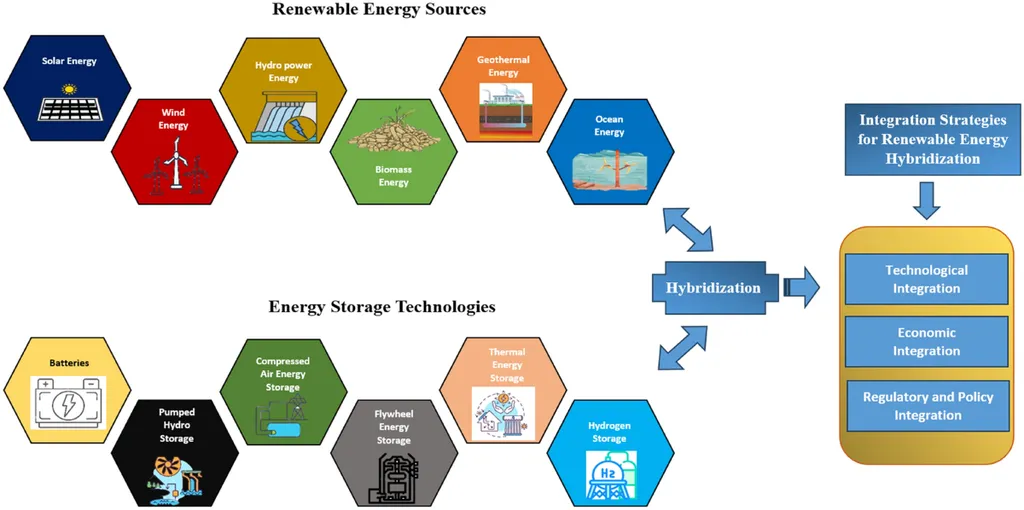In the quest for stable and reliable renewable energy integration, researchers have made a significant stride by combining two energy storage technologies to smooth out the bumps caused by variable wind and solar power. Sara Mahmoudi Rashid, a researcher from the Faculty of Electrical and Computer Engineering at the University of Tabriz, has led a study published in the journal Nature Scientific Reports that proposes a novel solution for off-grid hybrid microgrids.
The heart of the issue lies in the inherent variability of wind and solar power, which can cause fluctuations in the direct current (DC) link voltage, ultimately affecting power quality and distribution. In hybrid AC/DC microgrids, where alternating current (AC) and DC subgrids are interconnected via interlinking converters (ILCs), these fluctuations can become even more pronounced. “The challenge is to maintain a stable voltage in the DC link despite the intermittent nature of renewable energy sources,” Rashid explains.
To tackle this, Rashid and her team propose integrating a hybrid storage system comprising a battery energy storage system (BESS) and a superconducting magnetic energy storage (SMES) system. This combination is designed to dynamically smooth the DC link voltage and support grid loads during periods of reduced power generation. “The hybrid storage system not only regulates the DC link voltage but also controls the DC microgrid voltage, enhancing overall power management,” Rashid adds.
The researchers also suggest employing two ILCs with virtual synchronous generator (VSG) control to facilitate the integration of AC and DC microgrids. The first ILC manages power distribution between the two microgrids, while the second focuses on improving power quality on the AC side and its DC link to the hybrid storage system.
The practical implications for the energy sector are substantial. Off-grid and hybrid microgrids are becoming increasingly important as communities and industries seek to reduce their reliance on centralized power grids and integrate more renewable energy sources. By providing a solution to stabilize voltage fluctuations, this research could pave the way for more reliable and efficient microgrid systems.
“Our findings demonstrate that employing hybrid storage can maintain the DC microgrid voltage at its nominal value under continuous changes in PV and wind power,” Rashid notes. This stability is crucial for ensuring consistent power distribution and quality, which is essential for both commercial and residential applications.
The simulation results, conducted in the MATLAB Simulink environment, show promising outcomes. The hybrid storage system effectively smooths the DC link voltage and accurately distributes power between AC and DC microgrids, even under varying weather conditions that affect renewable energy generation.
As the energy sector continues to evolve, the integration of renewable energy sources into microgrids will play a pivotal role. This research highlights the potential of combining different energy storage technologies to overcome the challenges posed by variable renewable energy sources. By doing so, it opens up new possibilities for enhancing power management and stability in off-grid hybrid microgrids, ultimately contributing to a more sustainable and resilient energy future.
The study, published in Nature Scientific Reports, offers a glimpse into the future of energy storage and management, providing valuable insights for engineers, researchers, and industry professionals working towards a more stable and efficient energy landscape.

